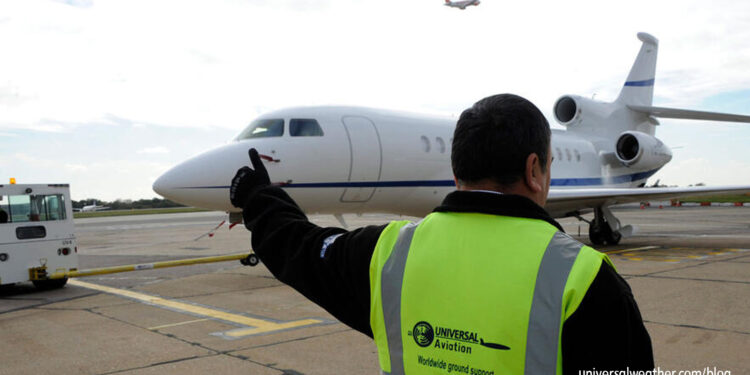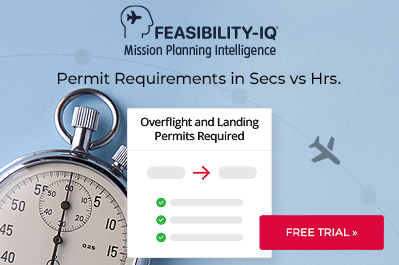Technical Stops for Business Aviation: Part 1 – Basic Considerations

This business aviation blog post is part of a series on determining tech stops for your trip.
While today’s longer range corporate aircraft do not make use of technical stops as often as their airborne predecessors, there are still many cases where tech stops are a necessary part of life when operating internationally and intercontinentally. Choosing the best technical stop options for your flight routing is both part art and science and is an important pre-trip planning consideration.
The following is an overview of what you need to know:
1. Primary considerations
Basic elements to consider when selecting tech stops include runway length, hours of airport operation and curfews, permit requirements/lead times, customs, immigration and quarantine (CIQ) availability and local weather at the estimated time of arrival.
2. Additional considerations
While not as critical as the above considerations, you’ll also want to consider fuel credit and timeliness of delivery, fuel prices and applicable taxes, commercial airline connections to bring in a replacement crew, availability of ground support equipment (GSE) and in-flight catering, permit revision flexibility, hotel availability, and ease of importing spare parts, should your aircraft experience an aircraft on ground (AOE) situation.
3. Not all airports are available for tech stops
Certain airports – such as Istanbul Ataturk (LTBA) — prohibit technical stops. It’s generally not possible to utilize military airports-for instance, in Russia-for tech stop purposes.
Also, be aware that there are congested commercial carrier locations – such as Heathrow (EGLL) – where technical stops are not practical or feasible. Keep in mind that many airports impose strict limitations on the time you may remain on the ground during a tech stop. Especially with congested large metropolitan airports, and/or when large local events are taking place, your time on the ground may be restricted.
4. Permit lead times
It’s important to consider permit requirements and lead times when planning technical stops. Keep in mind that in many regions – including Europe – private non-revenue operators do not require landing permits whereas charter (non-scheduled commercial) operations may. In Japan, for example, private operations do not require landing permits, and charter operators making just one tech stop in country do not need permits. However, if a charter operator makes two stops within Japan, permit requirements kick in. There’s generally no difference, in terms of permit lead times and requirements, if you’re making a technical or a destination stop. In general, permit lead times are usually three business days or less worldwide. In some cases, however, lead times can be much longer. For instance, official permit lead time for Russia is five business days, while the aeronautical information publication (AIP) lead time for Indonesian airports is seven business days. If you have a landing permit confirmed for Russia and need to change anything – such as location, time of operation, etc. – your permit must be reconfirmed, and this may involve operating delays.
5. Permit revisions
Make sure you understand ramifications of making a revision to a permit before you do so. For instance, if you request a permit revision for Russia during night hours, you may need to wait four – six hours to receive approval response. Landing permits in Japan require airport slot approvals, and any permit changes requires corresponding slot changes. If the revised landing time at Haneda (RJTT) does not match available slots you may be required to reposition to Narita (RJAA).
6. Airport curfews
Be aware that airport noise and operating curfews apply to both destination and technical stops. It’s always important to be mindful of airport hours of operation as well as airport overtime availability. Santa Maria (LPAZ) in the Azores, for example, is a straight-forward tech stop, but normal airport hours are restricted to 0630 – 2130 local. While airport overtime may be requested for this location, you must make the request no later than 1900 local the day prior to operation.
7. CIQ considerations
At most locations, other than in the U.S., passengers and crew do not usually need to clear CIQ when making international tech stops. It’s always important, however, to confirm CIQ requirements prior to operation. If you’re landing at a portal location in a region such as the European Union (EU), perhaps a Stansted (EGSS) tech stop, you’ll likely need to complete CIQ formalities prior to operating to your next EU destination. During an international tech stop, CIQ clearance is not usually triggered by a catering delivery. If crew members are disembarking, or replacement crew are embarking, this will not usually subject other crew/passengers to CIQ clearance. But, it’s always important to confirm all CIQ procedures, in advance, with your local ground handler.
Conclusion
When planning technical stops it’s always best to “know before you go.” In some regions of the world, particularly more remote areas, you may not have access to fixed base operators (FBOs), general aviation terminals (GATs) or general aviation (GA) experienced ground handlers. But, so long as the airport is open, accessible and basic services are available such tech stop options can, with advance planning, be good opportunities.
Questions?
If you have any questions about this article or would like assistance determining the tech stops for your next trip, contact me at katherineperry@univ-wea.com.
Stay tuned for Part 2, which covers more considerations when determining tech stops for your trip.




